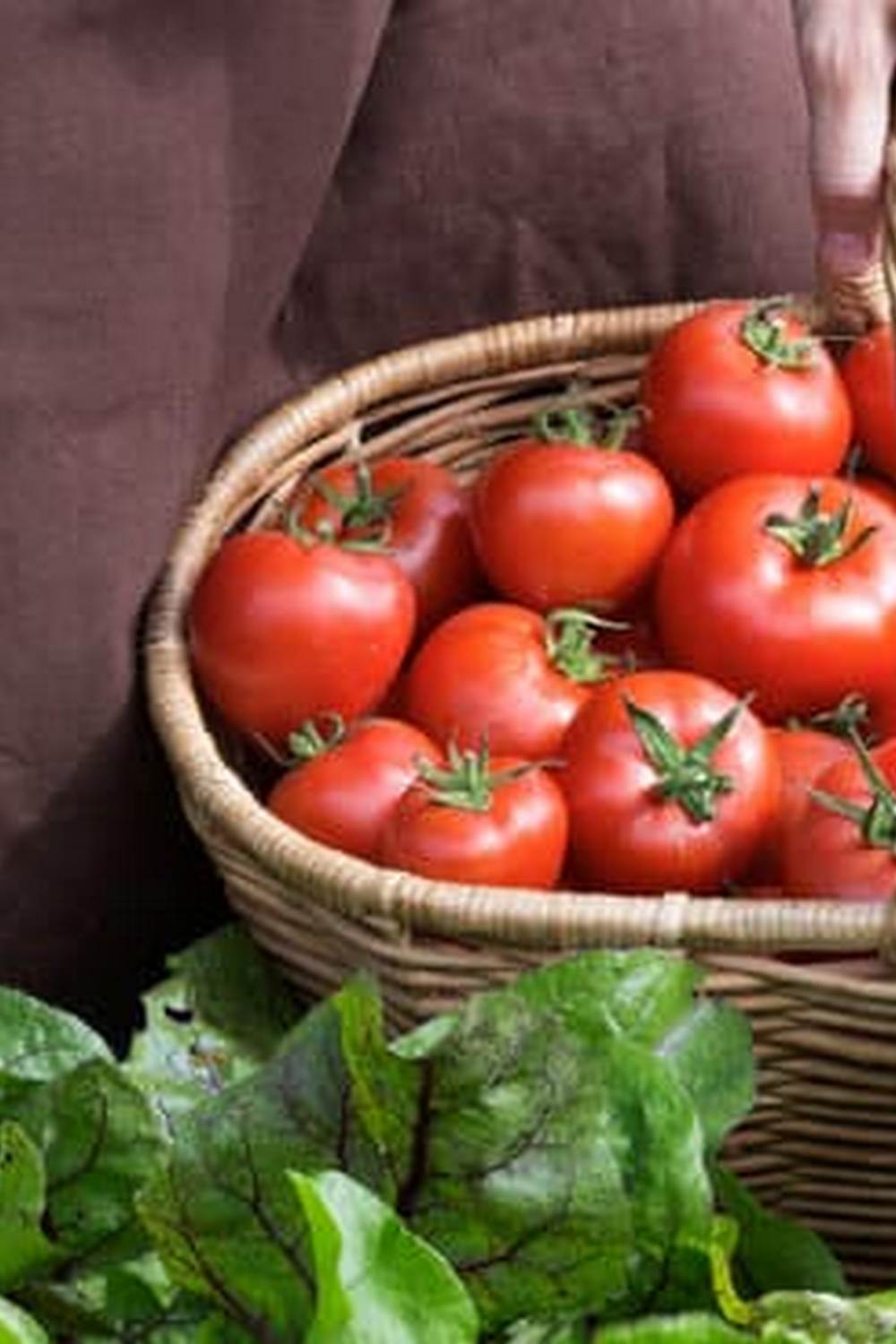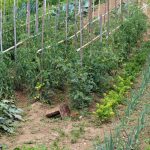Arizona’s unique climate and soil conditions provide both challenges and opportunities for gardeners looking to grow their own produce. When selecting vegetables for your Arizona garden, it is crucial to choose varieties that can thrive in the region’s arid environment. From tomatoes and peppers to squash and cucumbers, there are several vegetables that grow well in Arizona gardens.
With scorching temperatures and minimal rainfall, Arizona presents a demanding environment for plants. However, with proper planning and care, it is possible to cultivate a successful vegetable garden in the desert landscape. By understanding the importance of selecting vegetables suited for Arizona’s conditions, gardeners can set themselves up for a bountiful harvest.
In this article, we will explore the best vegetables for Arizona gardens, offering recommendations such as tomatoes, peppers, squash, and cucumbers that are known to flourish in the state’s challenging climate. Additionally, we will provide tips on how to prepare your garden for optimal growth, including soil preparation techniques and the significance of proper irrigation practices in maintaining healthy plants.
Whether you are a novice gardener or an experienced green thumb, these insights will help you cultivate a thriving vegetable garden in Arizona.
Best Vegetables for Arizona Gardens
Arizona’s unique climate and soil conditions can pose a challenge for gardeners looking to grow vegetables. However, there are several vegetables that thrive in Arizona gardens, providing a bountiful harvest with the right care and attention. Here are some of the best vegetables that grow well in Arizona gardens:
- Tomatoes: Tomatoes are a popular choice for Arizona gardeners due to their versatility and adaptability. Varieties such as cherry tomatoes, Roma tomatoes, and beefsteak tomatoes all do well in the hot Arizona sun.
- Peppers: Bell peppers, chili peppers, and jalapenos are all excellent choices for Arizona gardens. Peppers love the heat and can add a pop of color and flavor to your dishes.
- Squash: Zucchini, yellow squash, and butternut squash are great options for Arizona gardens. These hearty plants can withstand the intense heat and produce an abundant harvest throughout the season.
- Cucumbers: Cucumbers thrive in the warm Arizona weather and can be grown successfully in both traditional garden beds or containers. They add a refreshing crunch to salads and make delicious pickles.
When planning your vegetable garden in Arizona, it’s important to choose varieties that are well-suited to the region’s climate. By selecting vegetables that grow well in Arizona gardens, you can ensure a successful harvest while minimizing the risk of disease or pest infestations. With proper care, these vegetables will reward you with fresh produce throughout the growing season.
How to Prepare Your Garden for Vegetables
Arizona’s unique climate and soil conditions can present challenges for gardeners looking to grow vegetables successfully. However, with the right preparation, your garden can thrive and yield bountiful produce. One key aspect of preparing your garden for vegetables that grow well in Arizona gardens is ensuring that the soil is nutrient-rich and well-draining.
To prepare your garden soil, consider adding organic matter such as compost or well-rotted manure. This will help improve the soil structure and provide essential nutrients for your plants. Additionally, testing the pH level of your soil can help you determine if any amendments are needed to optimize growing conditions for your vegetables.
Proper irrigation is also crucial when preparing your garden for vegetables in Arizona. The desert climate means that water evaporation rates are high, so it’s important to water deeply and less frequently to encourage deep root growth. Consider installing a drip irrigation system to ensure efficient water delivery to your plants while minimizing evaporation.
| Soil Preparation Tips | Irrigation Tips |
|---|---|
| Adding organic matter such as compost or manure | Water deeply and less frequently |
| Testing soil pH levels | Consider installing a drip irrigation system |
Planting and Care Tips
Planting and caring for vegetables in an Arizona garden requires careful attention to detail due to the unique climate and soil conditions of the region. To maximize your chances of a successful harvest, it is essential to select vegetables that are well-suited for the hot and arid environment. Here are some planting and care tips to help you get started:
- Tomatoes: Tomatoes are a popular choice for Arizona gardens, but they require adequate sunlight and consistent watering. Plant them in well-draining soil and provide support as they grow.
- Peppers: Peppers thrive in the warm Arizona climate, but they also need plenty of sunlight and well-aerated soil. Mulching around pepper plants can help retain moisture and regulate soil temperature.
- Squash: Squash varieties such as zucchini and yellow squash do well in Arizona’s dry climate. Plant them in fertile soil with good drainage and be mindful of common pests like squash bugs.
- Cucumbers: Cucumbers are a refreshing addition to any garden, but they require ample water and sunlight to flourish. Consider using trellises or stakes for vertical growth to save space.
Proper care for your vegetable plants in an Arizona garden also includes following a strict watering schedule. In the desert climate, it is crucial to water deeply but infrequently to encourage deep root growth and prevent water evaporation. Consider installing a drip irrigation system or soaker hoses to ensure efficient watering while conserving resources.
In addition, fertilization plays a key role in the health and productivity of your vegetable garden. Use a balanced fertilizer high in nitrogen, phosphorus, and potassium to promote strong roots, abundant fruit production, and overall plant vigor. Be sure to follow the recommended application rates on the fertilizer package for optimal results with vegetables that grow well in Arizona gardens.
Remember that each vegetable has its specific requirements regarding planting depth, spacing, sunlight exposure, and care needs. By implementing these planting and care tips tailored to the unique challenges of an Arizona garden, you can increase your chances of a successful harvest of fresh homegrown produce throughout the growing season.
Dealing With Common Pests and Diseases in Arizona Gardens
Arizona’s unique climate and soil conditions can present challenges when it comes to growing vegetables in the region. However, with the right knowledge and techniques, you can successfully overcome common pests and diseases that may affect your garden. When selecting vegetables that grow well in Arizona gardens, it is essential to consider their resistance to local pests and diseases.
One of the most common pests that gardeners in Arizona face is aphids. These tiny insects can quickly multiply and damage plants by sucking out sap, causing wilting and yellowing leaves. To control aphids naturally, you can introduce beneficial insects like ladybugs or use a homemade insecticidal soap. Neem oil is also effective in deterring aphids while being safe for your vegetables.
In addition to pests, Arizona gardens are also susceptible to certain diseases such as powdery mildew and blossom end rot. Powdery mildew appears as a white powdery substance on plant leaves and stems, thriving in warm, dry conditions. To prevent powdery mildew, ensure proper air circulation around your plants by spacing them adequately.
Blossom end rot, on the other hand, affects tomatoes and peppers, causing dark spots at the blossom end of fruit. This condition is often due to fluctuations in water supply; therefore, maintaining consistent irrigation practices can help prevent it from occurring.
| Pests | Diseases |
|---|---|
| Aphids | Powdery Mildew |
| Spider Mites | Blossom End Rot |
Harvesting Your Vegetables
Harvesting vegetables from your Arizona garden can be a rewarding experience, but it is essential to know when and how to harvest each crop to ensure the best results. Knowing the right time to pick your vegetables can make a significant difference in their flavor and overall quality. Here are some guidelines on how to harvest some of the most popular vegetables that grow well in Arizona gardens.
Tomatoes
When harvesting tomatoes, it is crucial to wait until they are fully ripe for the best taste. Look for tomatoes that have developed their full color and are slightly soft to the touch. Gently twist the tomato off the vine or use a sharp pair of scissors or pruning shears to cut the stem. Avoid pulling or tugging on the fruit, as this can damage the plant.
Peppers
Peppers can be harvested at various stages depending on your preference, from green to fully ripe colors like red, yellow, or orange. However, mature peppers tend to have a richer flavor. Use a sharp knife or shears to cut peppers off the plant carefully. Do not pull them off by hand, as this may damage both the pepper and the plant.
Squash and Cucumbers
Both squash and cucumbers should be harvested while they are young and tender for optimal taste and texture. Check these vegetables regularly as they can quickly become overripe. Use a knife or pruning shears to cut them from the vine carefully. For summer squash varieties, harvest them when they reach 4-6 inches in length; for cucumbers, harvesting at around 6-8 inches is ideal for crispness.
By following these harvesting tips for commonly grown vegetables that thrive in Arizona gardens, you will be able to enjoy a bountiful yield of fresh produce throughout the growing season. Remember that proper harvesting techniques help promote continued growth for your plants and ensure a successful garden year after year.
Success Stories From Arizona Gardeners
Arizona gardeners have found success in cultivating a variety of vegetables that grow well in the region’s unique climate and soil conditions. With the right knowledge and techniques, local gardeners have been able to harvest bountiful crops of tomatoes, peppers, squash, and cucumbers. These success stories serve as inspiration for aspiring gardeners looking to have their own fruitful harvests.
Interviews With Local Gardeners
One of the key factors attributed to the success of Arizona gardeners is their willingness to share knowledge and experiences with each other. Through interviews with local gardeners, we can learn valuable insights into the best practices for growing vegetables in Arizona gardens. From soil preparation tips to pest control methods, these interviews provide a wealth of information that can help newcomers navigate the challenges of gardening in the desert climate.
Tips and Tricks From Experienced Gardeners
Experienced Arizona gardeners often have specific tips and tricks that have proven successful in their own gardens. Whether it’s advice on timing for planting certain vegetables or innovative irrigation techniques, tapping into the wisdom of seasoned gardeners can significantly improve your chances of a successful harvest. By learning from those who have already mastered vegetable gardening in Arizona, you can avoid common pitfalls and set yourself up for a thriving garden filled with an abundance of fresh produce.
Community Support Among Gardeners
In addition to individual success stories, there is a strong sense of community support among Arizona gardeners. Sharing seeds, plants, and tips with fellow gardeners fosters a sense of camaraderie and collaboration that benefits everyone involved. By participating in local gardening groups or online forums, aspiring gardeners can access a network of support and expertise that enhances their chances of growing flourishing vegetable gardens in Arizona’s challenging environment.
Conclusion
In conclusion, Arizona’s unique climate and soil conditions present both challenges and opportunities for vegetable gardening. By selecting the right vegetables that grow well in Arizona gardens, such as tomatoes, peppers, squash, and cucumbers, gardeners can enjoy a bountiful harvest despite the desert environment. Proper soil preparation, irrigation, planting timing, care techniques, and pest control measures are essential for success.
It is crucial to remember that gardening in Arizona requires some extra attention to detail due to the arid climate. With the right knowledge and tools in hand, any aspiring gardener can cultivate a flourishing vegetable garden even in the desert. By following the tips outlined in this article, individuals can ensure that their plants receive adequate sunlight, water, nutrients, and protection from common pests and diseases.
Ultimately, with dedication and a willingness to learn from experienced Arizona gardeners’ success stories shared in this guide, anyone can take on the rewarding challenge of growing their own vegetables in this unique environment. So roll up your sleeves, prepare your garden with care, choose the best vegetables for Arizona gardens wisely, and enjoy the fruits of your labor when you harvest fresh produce grown right at home. Happy gardening.
Frequently Asked Questions
What Vegetables Thrive in Arizona?
In Arizona, some vegetables that thrive in the hot and arid climate include tomatoes, peppers, eggplants, cucumbers, squash, and melons. These vegetables are well-suited to the long hours of sunlight and low humidity levels in the state.
When Should I Start a Vegetable Garden in Arizona?
The best time to start a vegetable garden in Arizona is typically in late winter or early spring when temperatures are mild and before the intense heat of summer arrives. This allows plants to establish themselves before facing the scorching temperatures of the desert.
Can You Grow a Garden Year Round in Arizona?
Yes, it is possible to grow a garden year-round in Arizona with careful planning and selection of crops. The key is to plant cool-season vegetables like lettuce, spinach, peas, and carrots in the fall for harvest in winter and warm-season crops like tomatoes, peppers, and beans in the spring for summer harvests.
This way, you can enjoy fresh produce throughout the year despite the extreme climate.

If you’re looking to get into vegetable gardening, or are just looking for some tips on how to make your current garden better, then you’ve come to the right place! My name is Ethel and I have been gardening for years. In this blog, I’m going to share with you some of my best tips on how to create a successful vegetable garden.





